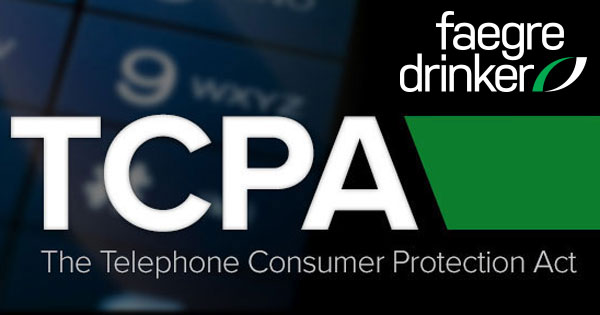On November 21, 2022, the Federal Communications Commission (FCC) released a Declaratory Ruling and Order (Declaratory Ruling), in which it determined that “ringless voicemail” to wireless phones requires prior consumer consent to transmit because it is a “call” made using an artificial or prerecorded voice and thus is covered under section 227(b)(1)(A)(iii) of the 1991 Telephone Consumer Protection Act (TCPA). The Declaratory Ruling was issued even though the petitioner, All About the Message, LLC (AATM) had requested withdrawal of its 2017 Petition for Declaratory Ruling seeking to have the FCC declare that ringless voicemail, based on the technology and the lack of direct charge to wireless consumers, is not subject to the TCPA and the agency’s implementing rules. Addressing AATM’s withdrawal request, the FCC stated that it believed a ruling was necessary to resolve a controversy and remove uncertainty about the status of ringless voicemail under the TCPA.
Codified in section 227 of the Communications Act of 1934, the TCPA addresses certain practices considered to be an invasion of consumer privacy or, in some instances, a risk to public safety. Section 227(b)(1)(A)(iii) prohibits making any non-emergency call using an automatic telephone dialing system (autodialer) or an artificial or prerecorded voice to a wireless telephone number without the prior express consent of the called party. AATM sought an FCC ruling that delivery of a voicemail message directly to a consumer’s cell phone voicemail is not covered by the TCPA. AATM relied on several arguments, but primarily claimed that its ringless voicemail message was not a “call” because its proprietary software creates a landline-to-landline session directly to the telephone company’s voicemail server without charge to the subscriber and is not shown as a call on any consumer bill.
Over 8,000 comments and replies filed on the AATM Petition almost uniformly opposed the requested clarification. The Declaratory Ruling considered and rejected every argument AATM made in support of its assertions and the FCC also denied AATM’s alternative request for a waiver of TCPA rules.
The question fundamental to the ruling was whether AATM’s ringless voicemail message is a “call” to a wireless telephone number. The statute itself does not contain any definition of a call, requiring the FCC to look to its precedent and to apply common-sense meaning to the word. The FCC found that ringless voicemail, at least as provided by AATM, constitutes a “call” subject to the TCPA’s protections. This was found to be the case even though the FCC acknowledged that ringless voicemail messages are not traditional handset-to-handset communications.
The Declaratory Ruling cited the FCC’s 2015 TCPA Declaratory Ruling and Order which found that Internet-to-phone text messages, which are sent to a carrier’s server then routed to a consumer’s phone, are calls because callers address these computer-generated text messages to a consumer’s wireless telephone number. The FCC at that time concluded that use of the wireless phone number (either as part of an email string or by entering the phone number on a web portal) satisfied the TCPA’s requirement that the call be “to any telephone number assigned to a [wireless] service” because the wireless telephone number is a necessary and unique identifier for the consumer. The FCC stressed that, “[f]rom the recipient’s perspective, Internet-to-phone text messaging is functionally equivalent to phone-to-phone text messaging,” and that, “the potential harm is identical to consumers; unwanted text messages pose the same cost and annoyance to consumers, regardless of whether they originate from a phone or the Internet.”
The FCC applied this precedent to conclude that AATM’s ringless voicemail is identical in function to Internet-to-phone texting. Specifically, in the ringless voicemail context, the telephone number assigned to a consumer’s wireless phone and associated with the voicemail account is a necessary and unique identifier needed to reach the consumer. The FCC concluded that this view was consistent with the legislative history and purpose of the TCPA, where Congress expressed concern that automated or prerecorded calls can be a nuisance. Here, the FCC stated that a key issue with ringless voicemail—the delivery of unwanted messages over which the consumer has no control, and that potentially crowd out wanted messages—was just the sort of nuisance that Congress addressed in enacting the TCPA.
The FCC rejected another AATM argument that the TCPA only applies when the consumer is charged, noting that the restriction on autodialed or prerecorded calls to wireless numbers is separate from the restriction on calls to services for which the caller is charged. However, the FCC also noted that ringless calls can result in charges on retrieval of the message, including where minutes used for voicemail retrieval are deducted from a limited plan.
Finally, the FCC denied AATM’s request for waiver of FCC rules for a failure to demonstrate there is good cause to grant a waiver. The FCC stressed that it was not foreclosing the use of this technology, merely requiring that it be used consistent with the need to have appropriate prior consent for its use. The Declaratory Ruling became effective upon its release.

